Westies can swim, but they are not very good at it. It is a common misconception that all dogs instinctively know how to swim and while yes, paddling in the water comes naturally to all dogs, not all dogs are suitable for swimming. Just like people need to learn to swim, so do dogs. Sadly, many dogs die every year from drowning because their people never realized that they did not instinctively know how to swim.
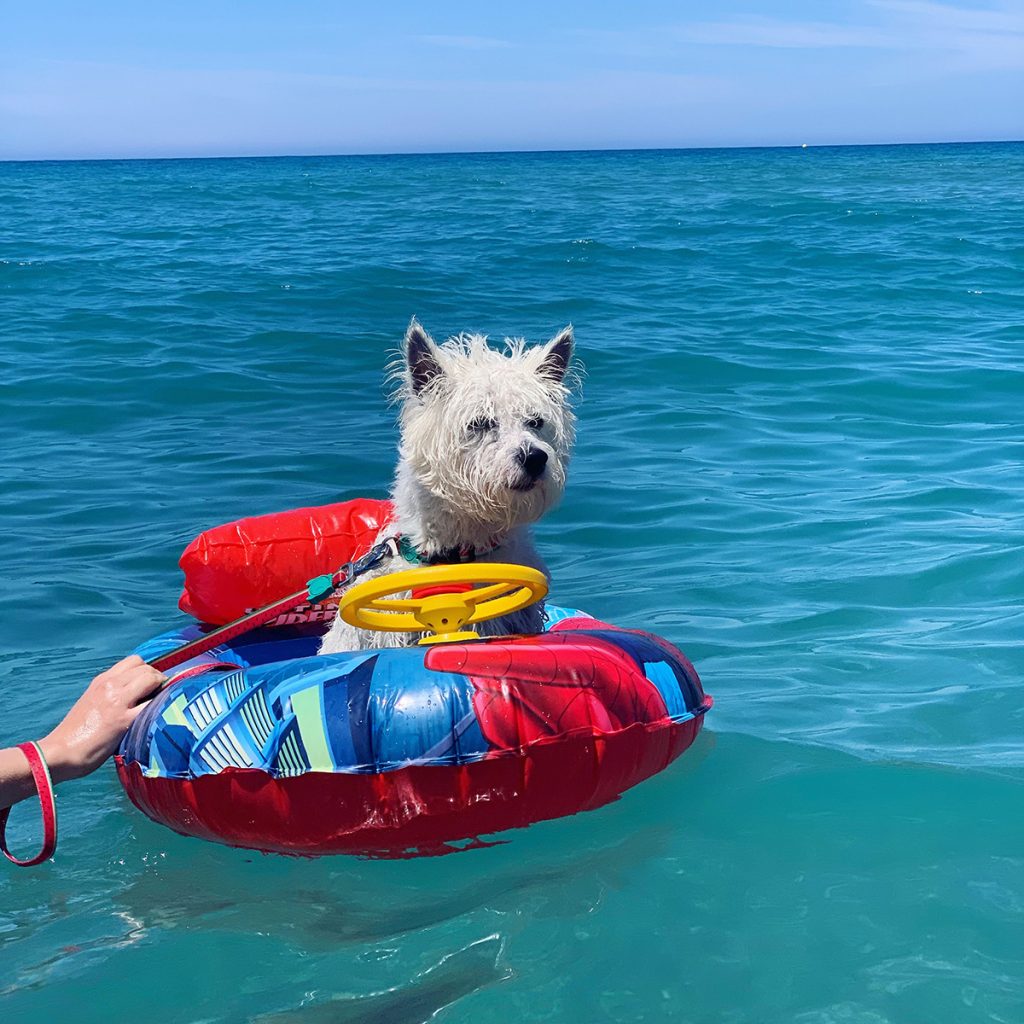
Can Westies swim? Yes, Westies can swim, but not well and not for long periods of time. They were not bred to swim. Their short legs and little, chunky bodies were bred to dig through the earth to get at prey like rats or rabbits.
Westies can swim in short stretches in calm water or still pools but they should always be supervised. All dogs need to learn how to swim just like all people need to learn how to swim.
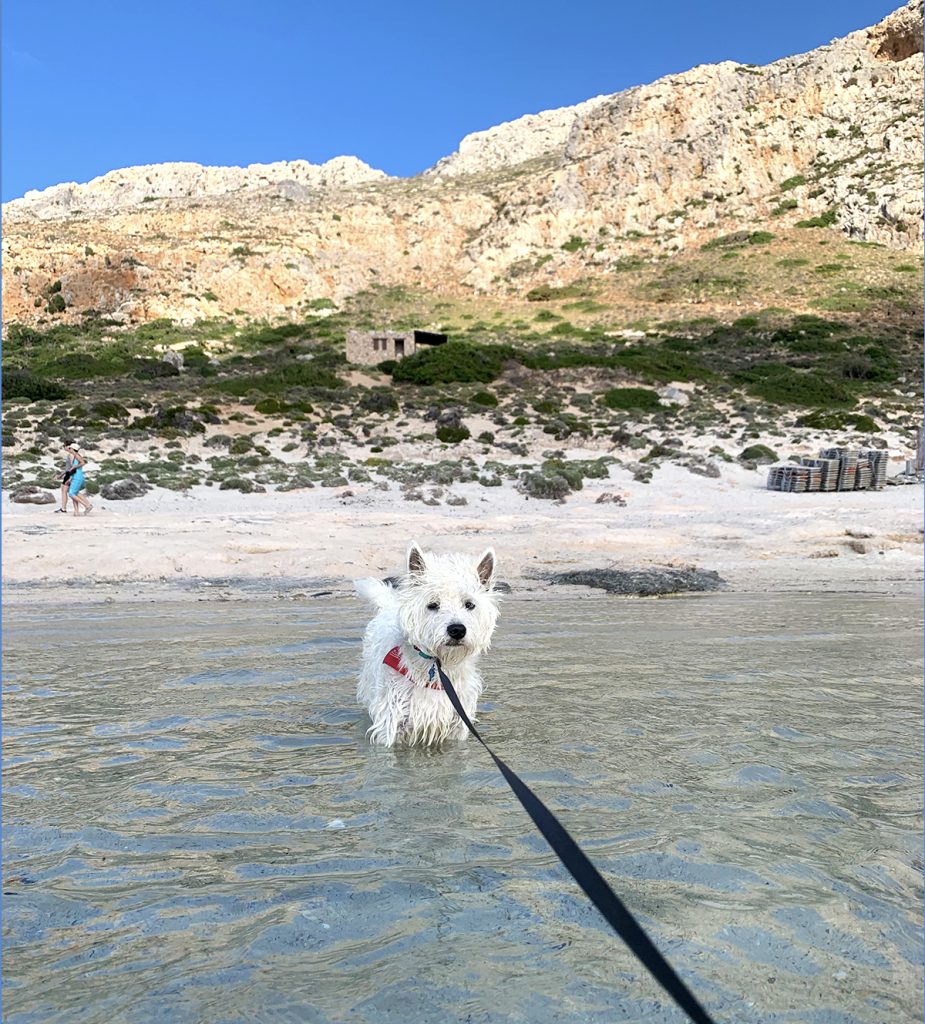
Westies can enjoy the water, but their owners need to be just as cautious with their dogs around the water as they would be for toddlers or babies around the water. There are many ways to prevent drowning tragedies, such as always emptying kiddie pools to keeping deeper pools fenced off. Westie owners should fit their dogs with life vests and know basic CPR.
But I Saw This Cute Video of a Westie Swimming
Just because one Westie has learned how to swim – or even dive off a board – does not mean that YOUR Westie will learn how to swim. Just as some people are better swimmers than others, so some Westies are better swimmers than others. It cannot be stated often enough: Dogs do not instinctively know how to swim. They have to learn to swim – even learn the “doggy paddle” and they need you to keep watch over them as they learn.
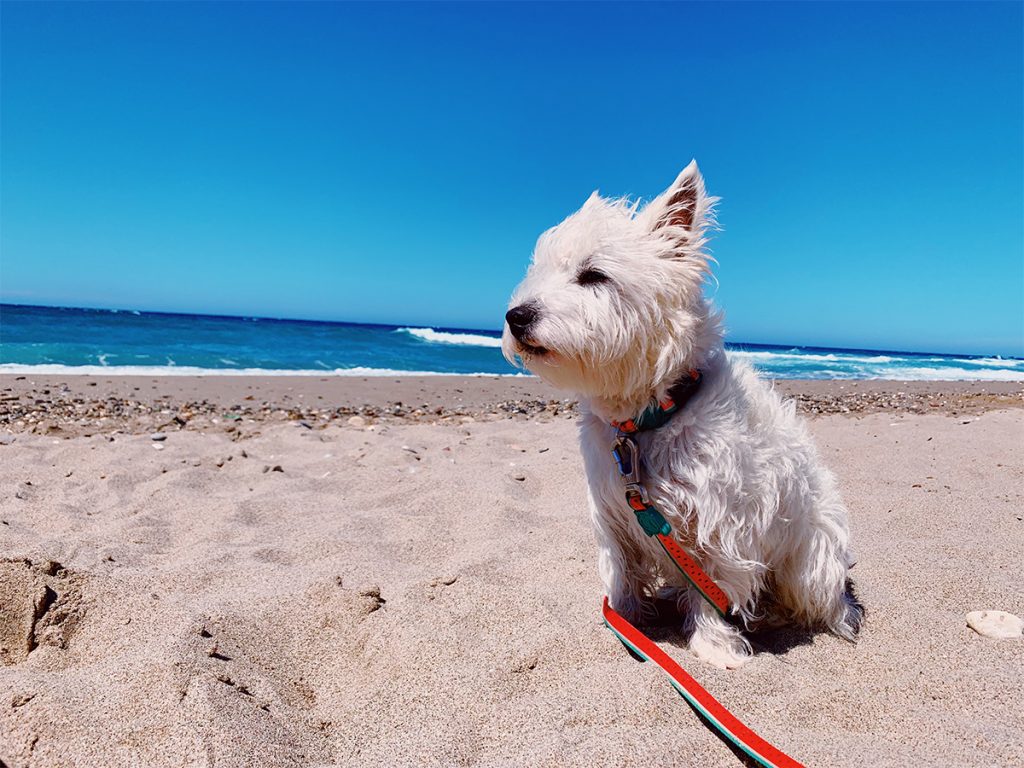
First Lessons
Never force your dog into the water. A terrified dog will freeze up and not move, making him or her drop like a rock under the water, even if the water is only a foot deep. If your dog is interested in the water, keep the first lessons in very shallow water like a kiddie pool.

Tips to help your Westie enjoy swimming:
- Have your partner or a friend close by, ready to help.
- Put a life vest on your Westie. Choose one specifically made for dogs with a large ring at the top to make it easy to grab. Here is our recommendation, it’s the life vest we put on Sami everytime we take him to the river or to the pool.
- First put a leash on your Westie and walk into the water. He does not need to float yet, he just needs to get his paws wet and see that it’s no danger. This might take a while for him to get used to, so be patient.
- Reward your Westie with a treat, verbal praise or a chew toy for letting his paws get wet.
- Slowly walk into the water and encourage your Westie to follow. Holding a favorite toy is one way to get a Westie to follow, but doesn’t work on all Westies. Remember – each Westie is different! And they’re quite stubborn sometimes. What we did with Sami was to turn it into a game. I walked into the water and started running and splashing and having fun, so he immediately followed and started to run after me. I kept doing this in small water, where he could still touch the ground, so he felt comfortable and enjoyed the game immensely!
- Do not try to do everything in one day. Take your time. If your Westie starts getting upset or just plain bored, call it a day.
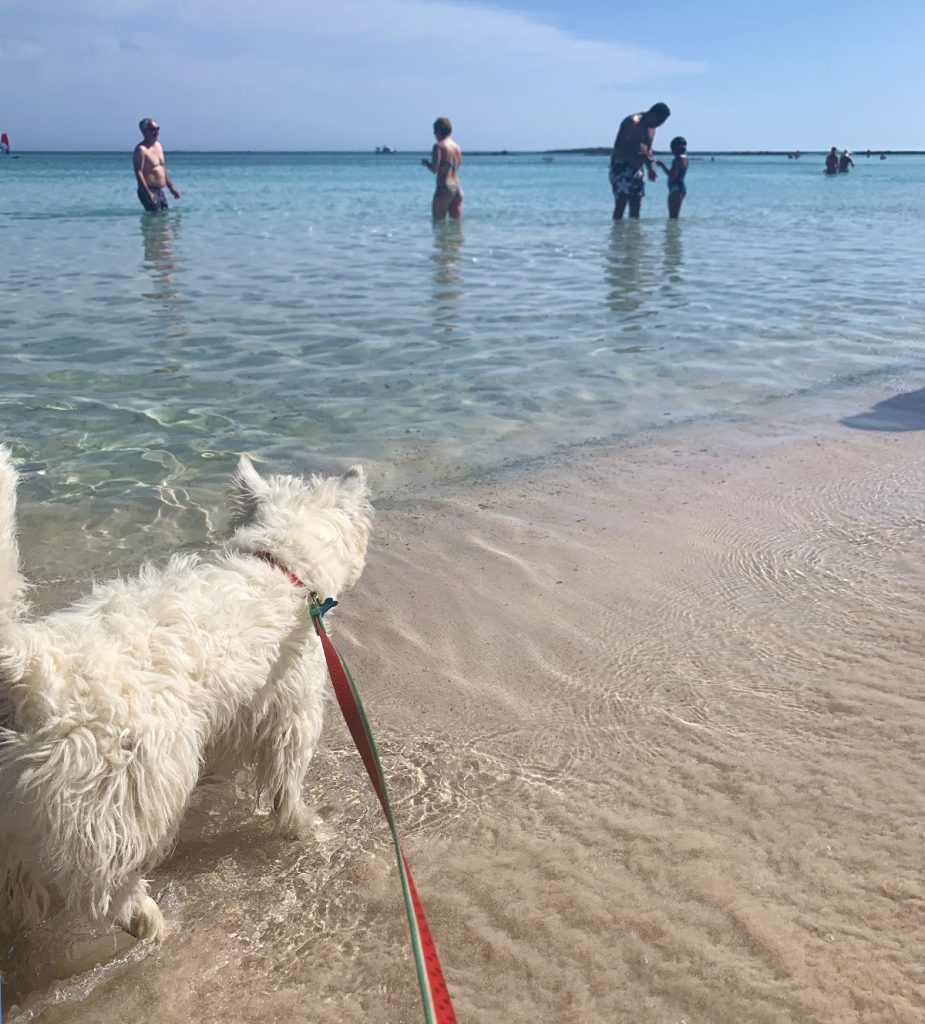
Getting Your Westie Used to a Life Jacket
Your Westie may take exception to the first time the life jacket goes on. Be sure to reward him with a special treat and only give those treats when he’s in the life jacket. This way your Westie will associate the life jacket with good things. Place the jacket on the dog inside your home during a time when your Westie is tired and less prone to trying to rub the jacket off. Keep the jacket on for a few minutes. Each day place the jacket on for a few minutes longer. When your Westie is not bothered by the jacket, it’s time to try the water.
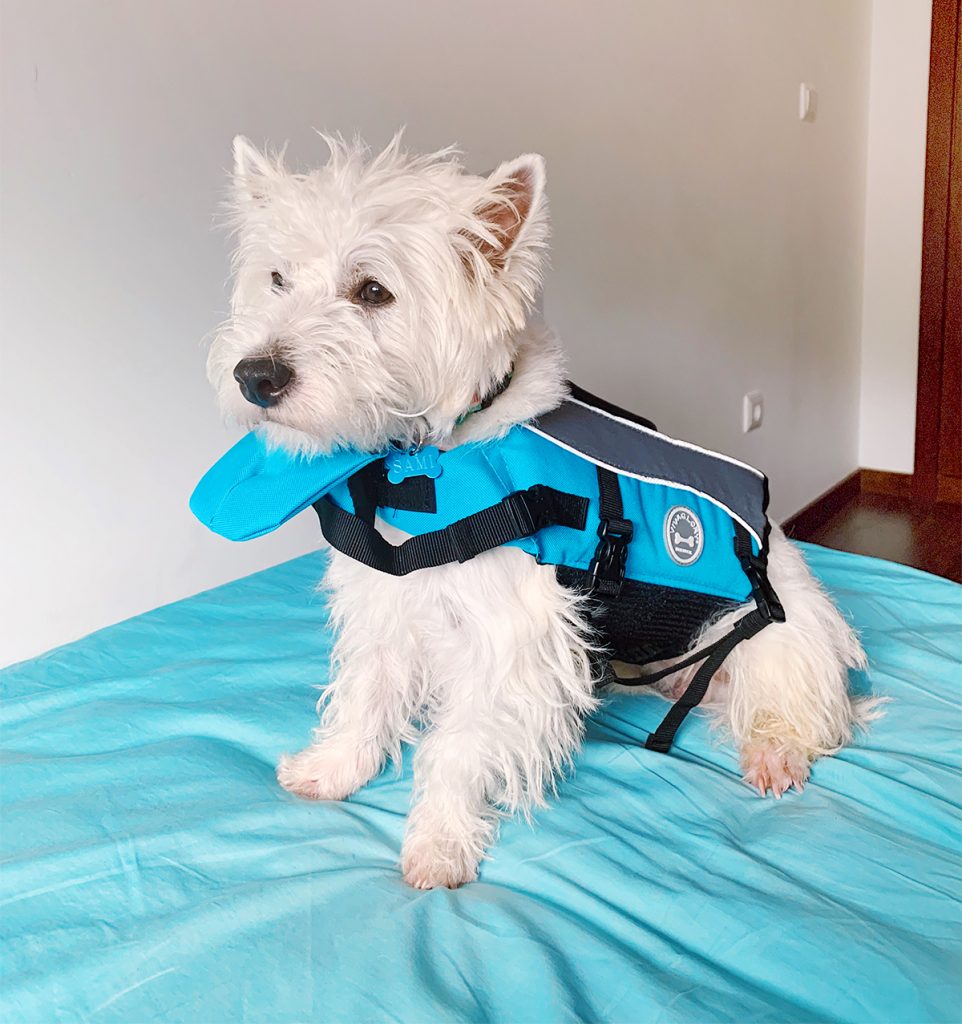
A Note About Older Dogs
It’s easier to teach a puppy to swim than it is an older dog. It can be done, if the older dog is interested enough. If your Westie is a rescue or you do not know his or her background, do not force the dog into the water. Your Westie may have had a past traumatic experience and has a right to be scared. You can lead a Westie to water, but you can’t make him swim – so to speak.
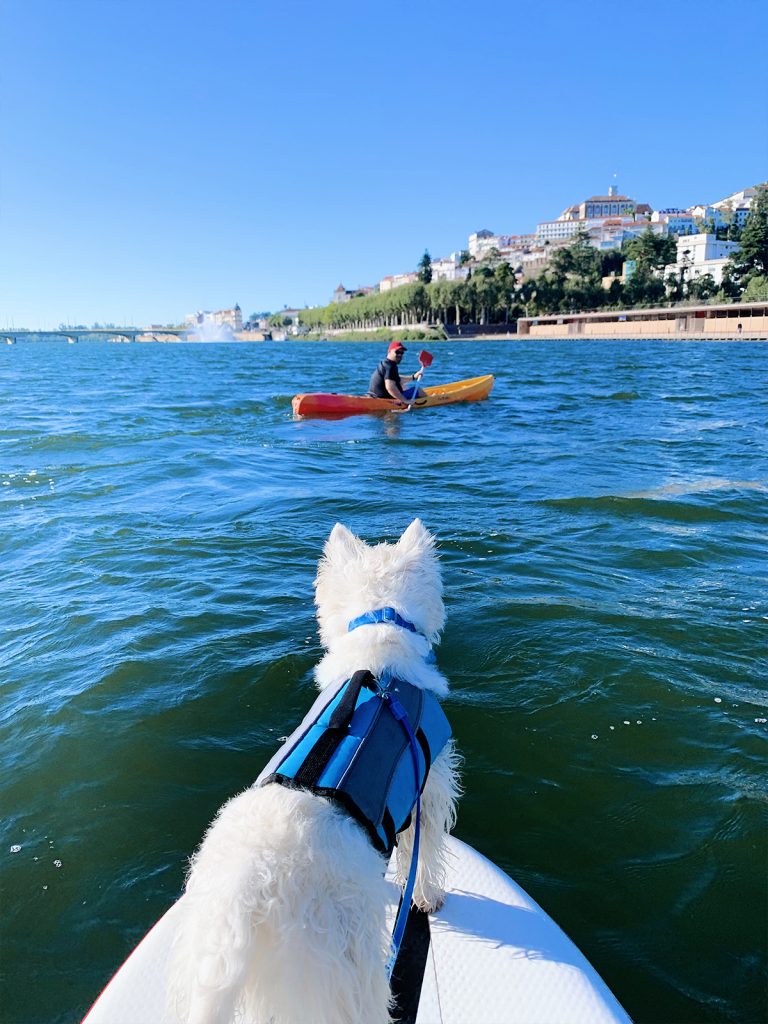
Pool Safety
Do you have a pool at your home? Even a kiddie pool? Follow these safety tips to prevent tragedies.
- Fence off all pools so the dog (or a small child) cannot accidentally fall in when you are not there.
- Drain and turn over all kiddie pools when you are not around.
- Place a ramp or waterproof pet stairs in your pool so any creatures that fall in have a way to get out.
- Make sure your dog can’t get into the pool from above, such as from a patio, garden wall or nearby deck. Place a fence in this area to keep the dog from falling or jumping into the pool.
- If possible, get your pool covered when not in use. If this is impossible, keep a float or life raft in the pool that your dog maybe able to climb up on.
- Make sure all food is picked up around the pool. Sniffing for food is a common reason why dogs go near pools and may slip in.
- Brush up on the “Sit” and “Stay” commands. Do short sessions in your home, yard and during walks so that if you spy your dog at the edge of a deep pool, just call a stay or sit and the dog should stay put until you get there.
- Make sure everyone in the family knows these rules and know if your Westie can swim or not.
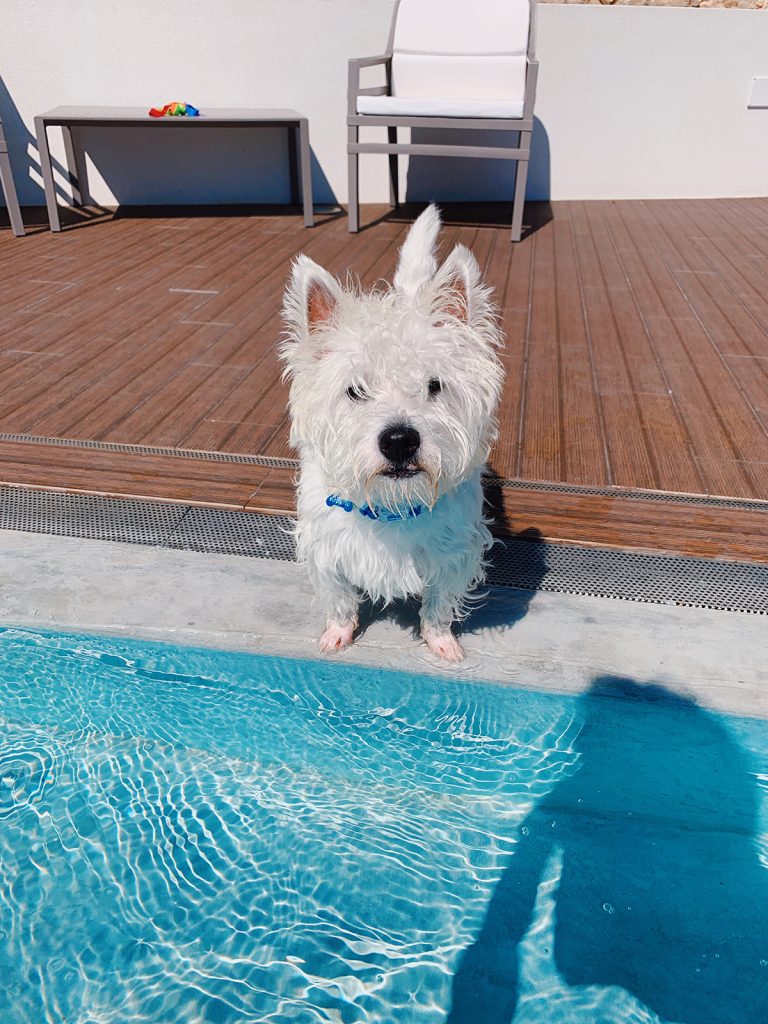
Doggy Artificial Respiration
The worst has happened. Your Westie walked off the edge of a pool and fell in. He or she dropped to the bottom. Right away, dive in and get your dog to the surface. Do not worry about your clothes or your pocket contents or anything else – just get your dog. Your Westie may need some artificial respiration.
- Make sure there is nothing in your Westie’s mouth. Pull the tongue forward to be sure.
- Make sure your dog still has a pulse or the heart is still beating. Place your Westie on the right side and feel the chest for the heart. You need to keep the Westie in that position for artificial respiration.
- Place a hand over the Westie’s mouth.
- Place your mouth over your Westie’s nose and blow GENTLY. If your Westie is a puppy, then the head will too small for this, so place your mouth over the whole muzzle, nose, mouth and all. Speed is essential here.
- Look for the chest to rise and fall in breathing. Lift your mouth off of the dog’s to help your Westie get more air.
- Repeat until the dog is breathing on his or her own.
A Note About Doggy CPR
CPR is performing a series of chest compressions on a dog in order to get the heart going again. This is a complicated procedure and needs special training on a fake dog for practice. NEVER practice on a living dog as you can wind up breaking ribs. For small dogs like Westies, using thumb and fingers to compress the chest is okay rather than using full arm thrusts like for a person. Only squeeze about a quarter of the way into the chest.
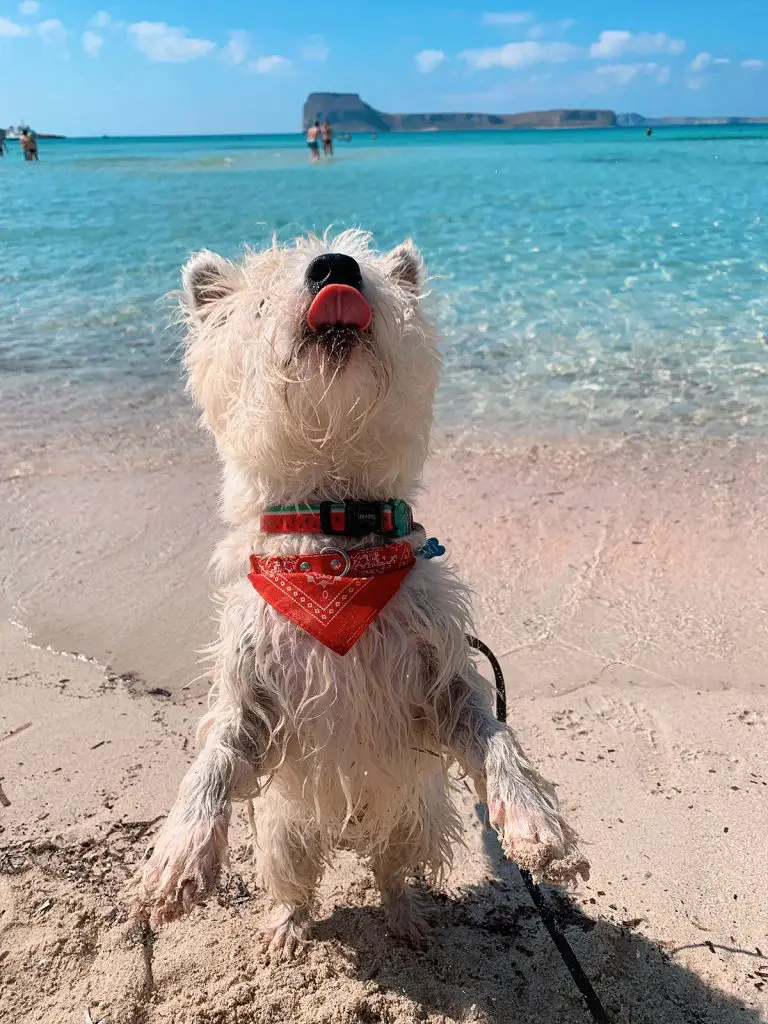
After a Swim
Lots of people forget this step, since your westie swam! But it’s actually really important for the overall health of your puppy.
Your pool or local watering hole will have chemicals, bacteria and possibly parasites in the water. This gets in your Westie’s coat and it get get to their skin, which is already prone to allergies. Give a good bath or even a thorough rinsing after a swim so the chlorine or other bad things do not bother your Westie. Westies can get sick from swimming in natural bodies of water, including getting potentially lethal diseases.
Although your Westie may complain, giving a bath after a swim could be a life saver and it will surely be an overall good thing for his/her health.



